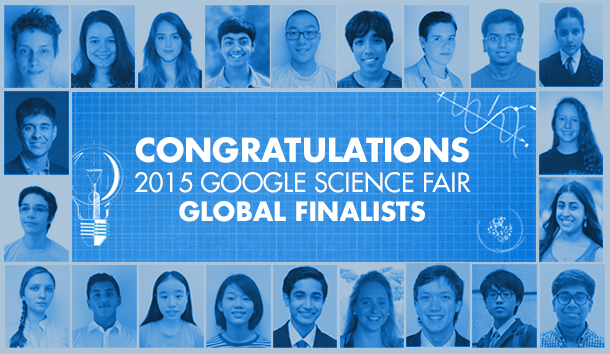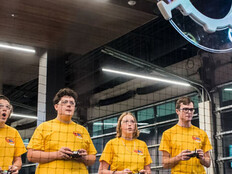Google Spotlights 20 Student Science Fair Finalists
Reading about the big ideas presented by the 20 global finalists of the 2015 Google Science Fair is a glimpse into the future of science.
From gardening with a smartphone-controlled robot to detecting environmental changes with nanotechnologies, thousands of teenagers from across the globe are using their minds to solve world problems — and for a chance at a $50,000 scholarship and other prizes.
Google officially announced the finalists earlier this month. Throughout August, the company will be highlighting the finalists and their journey to bring their big ideas to fruition. And on Sept. 21, these finalists will visit Google headquarters in Mountain View, Calif., to present their projects to judges.
"The 20 discoveries of the global finalists began as simple curiosities, and have the potential to change the world," said Andrea Cohen, the science fair's program leader, during the announcement of the finalists on Google Hangout.
These student science projects range from the futuristic and complex to simple but powerful notions using everyday, natural products. These include a method to detect impurities in gasoline just by scientific knocking, producing hydrogen storage material and biodiesel by using chicken feathers and fat, and absorbing water pollutants with corn cobs.

The 20 global finalists and their science projects are:
- Matthew Reid, U.K. — Arduorbiter: Democratizing low-Earth orbit
- Pranav Sivakumar, U.S. — Automated search for gravitationally lensed quasars in the Sloan digital sky survey
- Anela Arifi and Ilda Ismaili, Bosnia-Herzegovina — Catch it on the Wing: Production of hydrogen storage material and biodiesel from chicken feathers and fat
- Zhilin Wang, Singapore — Affordable renewable energy
- Anika Cheerla, U.S. — An automated diagnosis of Alzheimer's
- Alexey Tarasov, Russia — Exploring the logic of ternary logic in electronics
- Girish Kumar, Singapore — Revup: Improving learning through automated study questions
- Tanay Tandon, U.S. — delivering rapid, portable and automated blood morphology tests
- Anurudh Ganesan, U.S. — Vaxxwagon: a reliable way to store and transport vaccines
- Eliott Sarrey, France — Bot2Karot: gardening through a a smartphone-activated robot
- Calvin Rieder, Canada — Extracting clean water from air: Solar-powered potable water
- Wei-Tung Chen, Taiwan — Calculating the 3D position of an object from a single source
- Isabella O'Brien, Canada — recycling shells to reduce ocean acidification
- Lalita Prasida Sripada Srisai, India — Absorbing water pollutants with corn cobs
- Deepika Kurup, U.S. — clean drinking water through solar-powered silver
- Laura Steponavičiūtė, Lithuania — Detecting the environmental changes of nanotechnologies
- Krtin Nithiyanandam, U.K. — Improving diagnoses and treatment of Alzheimer's with a new, molecular "trojan horse"
- Yo Hsu and Jing-Tong Wang, Taiwan — Knock-on fuel: Detecting impurities in gasoline with sound-pattern analysis
- Adriel Sumathipala, U.S. — A rapid, portable and affordable means of early detection for cardiac disease
- Olivia Hallisey, U.S. — using silk to better store and easily transport Ebola antibodies









